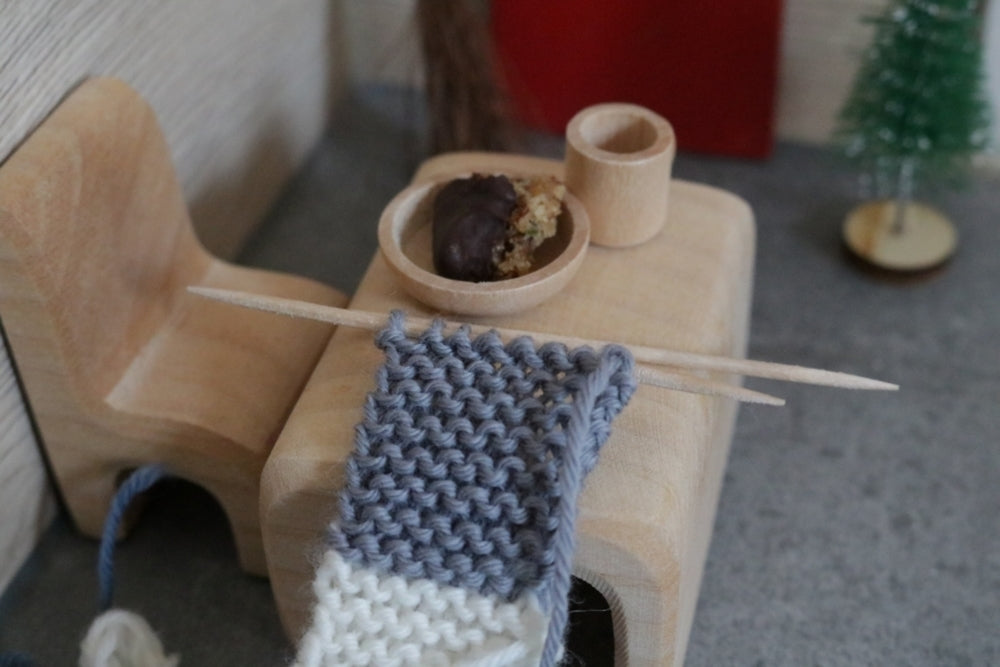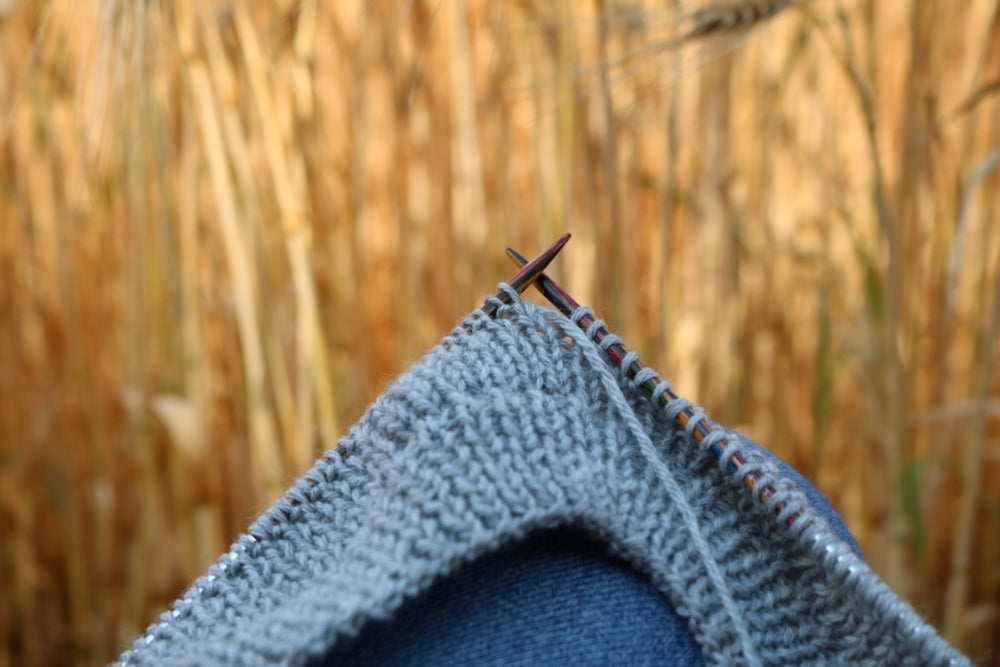"Mum, look! I've worn it once and it's already broken" - that's how my daughter greeted me the other day when she came home from nursery. She pointed to the front of her brand new Festival Sweater. While playing in the playground, she had got stuck on a piece of wooden play equipment. This resulted in a large thread puller in a nubby pattern and a small one in a plain knit. And so my repair skills were needed.
When it comes to treatment of stains in knitted items, I am already an expert thanks to my children. Repairing their home-knitted garments - that's the next level! But as I want them to wear their knitted jumpers instead of keeping them in the wardrobe, I'm happy to take on this challenge.
Inconspicuous repairs - yarn pullers
Equipped with a darning needle, I set about restoring the nap pattern to its normal state. As the thread was not broken, but fortunately only pulled, I only had to loosen up the yarn that was hanging out and distribute it evenly again.

Then I turned my attention to the small yarn puller in the cream-coloured plain knit.

I used the crochet hook to pull the rather short frayed thread onto the inside of the jumper to carefully sew it there. For threads that are so short that they can barely be threaded into the needle, I simply use sewing thread to help and use it to fasten the loosened thread to the inside of the knitted fabric with a few stitches.

So I was able to repair both of these areas quickly, easily and, above all, inconspicuously. But what happens if a piece of knitting is damaged more severely? A broken thread or even a hole?
Large and unconventional repairs
One thing is certain: there is no one-size-fits-all solution. If you have a real hole that needs to be repaired as inconspicuously as possible, a bit of technology is required, as you can see in this video.
Sometimes, however, a creative and rather unconventional solution is required. Rosy told me that years ago she got stuck somewhere with a lace scarf and a stitch tore at the edge. She had no room for manoeuvre there, no thread that she could have sewn or knotted. However, as the cloth would otherwise have unravelled, she decided without further ado to glue the spot. A method she would not normally recommend - but one that can work wonders in an emergency. She still wears the scarf today.
Visible repairs - getting creative with visible mending
And then, of course, there are the heavily used areas that become thinner or even holey over time, as well as the classic holes caused by moth damage.
My husband and I usually suffer from elbows, while my children have already worn through one or two pairs of woollen trousers at the knees. So far, I've helped myself with patches made of leather, sturdy cotton fabric or woollen wool. Sometimes I've just pulled together small holes in inconspicuous places with a few stitches.
For some time now, I've been coming across more and more great examples of far more creative repair methods on social media, especially Instagram and Pinterest. "Visible Mending" is a brand new trend in which holes are artfully mended. This sometimes involves deliberately giving an item of clothing a completely new look, for example through elaborate embroidery, patching or darning. This not only looks beautiful, but also makes a statement: clothing is valuable and deserves to be repaired.

This mixture of creativity and sustainability made me want to delve deeper into the topic. While searching for suitable literature, I came across the handbook for a sustainable wardrobe: Patches and Stuffing. An incredibly attractively illustrated book with wonderful texts and lots of great ideas and instructions for all kinds of clothing repairs. Highly recommended! I can't wait to try out some of these techniques myself.

Who knows, after reading to my children the other day about how Astrid Lindgren's little Lotta secretly cut up her woollen jumper with scissors, I wouldn't be surprised if I got the chance to do it soon ;-)




